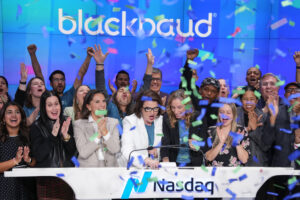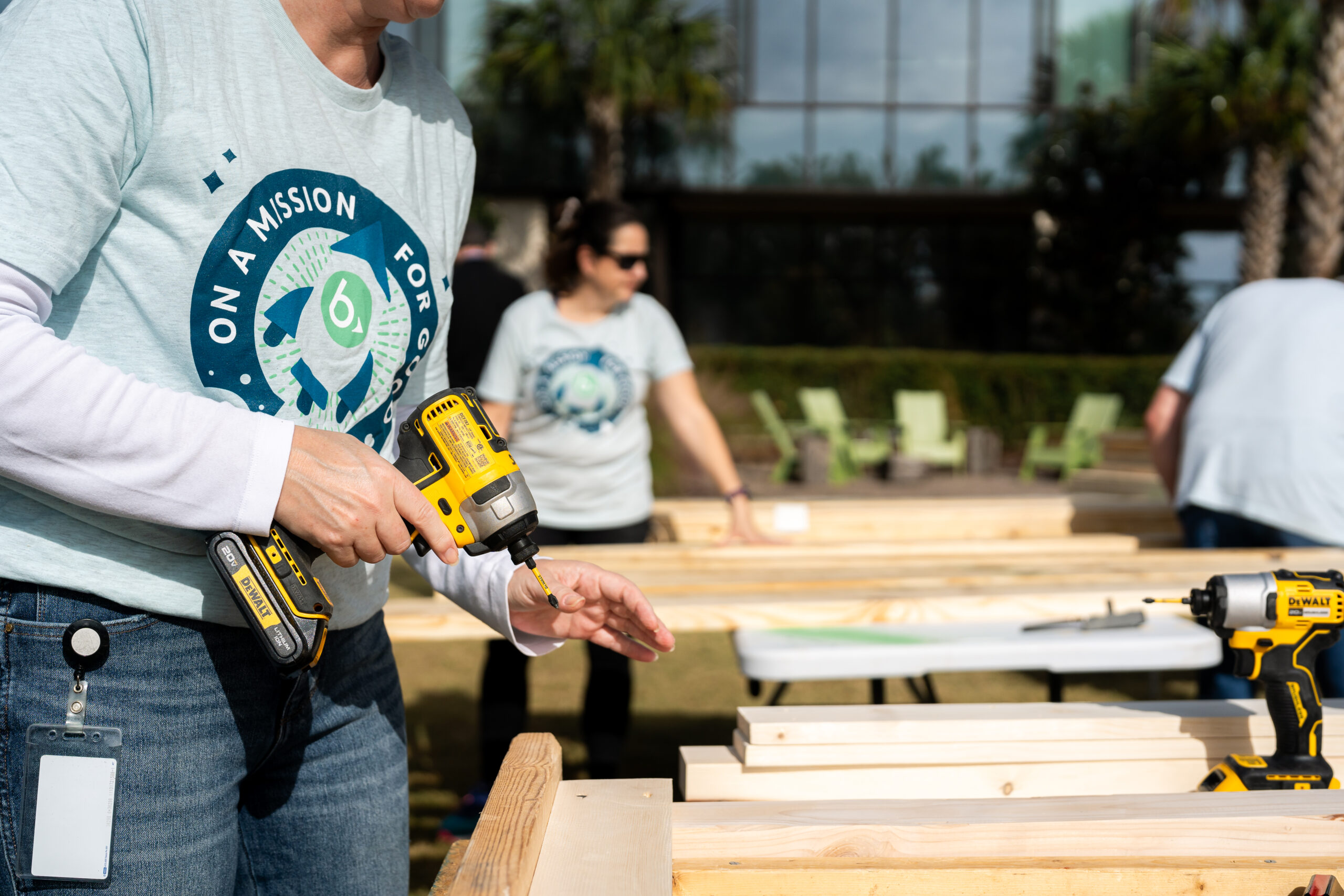Why is it crucial for businesses to step up efforts in giving and volunteering?
I think members of the CECP community are already very motivated by the way we deepen ties with key stakeholders, enhance culture and employee engagement, and add tremendous impact to the community through giving and volunteering. On average, companies that offer both giving and volunteer programs increase engagement by over 17%.
Simply put, it’s good for business to do good because it delivers on so many levels for companies, communities, and society. This shared insight is one of the things that is so powerful about the CECP community.
We have nearly 2 million nonprofits in the U.S. alone that rely on well over $500 billion in donations each year. The public, private and social sectors each play essential roles in making our society function, and business can play a critical and stabilizing role in this broader ecosystem.
Beyond social trends and shifts, we continue to also encounter and overcome multiple natural disasters and humanitarian crises each year. Amid this disruption, one constant remains for successful business leaders: staying anchored in delivering both value and values for key stakeholders.
There is no one-size-fits-all approach. But when companies engage consistently with community partners—focusing on tangible needs and shared goals—they can drive impact that improves both business outcomes and social progress. In my experience, giving and volunteering are reliable strategies for doing both.
How does Blackbaud encourage corporate giving and volunteerism among its teams, clients, and partners?
We’re a remote-first company with operations and employees across the globe, so we benefit tremendously from volunteering together. As we give back—virtually, or in-person through regional gatherings—we can create shared experiences and forge deeper bonds among our team members. Because nonprofits are also an important part of our customer base, these engagements have the benefit of helping our team better understand their needs and experiences as well. Blackbaud employees also regularly serve as nonprofit board members and advisors in their local communities, which we provide support for.
My colleagues do a great job making sure these in-person and virtual engagements are fun, constructive, and tailored to our strengths. Here in South Carolina, we host “Camp Blackbaud” each year with the Charleston Promise Neighborhood, where volunteers do hands-on science and engineering projects with young students. Earlier this spring, Blackbaud was proud to be the lead sponsor for the annual Charleston Ocean Racing Association Military Salute Regatta for the fifth year. This impactful sailing event gets veterans out on the water, honors and applauds our military for their service, and benefits local nonprofits serving our veteran community. Later during the holiday season, Blackbaud employees collect and donate toys for those in need, ensuring that no one misses out on the spirit of the season. Last year we celebrated our 25th year organizing the Blackbaud toy drive, which has collected nearly 150,000 gifts for Toys for Tots and other partners around the globe.
In addition to making it meaningful, we make it easy: it’s simple for our employees to take advantage of matching gifts (which they do at 2.5x the national average) by using our own employee giving solution, YourCause.
And we make it relevant by engaging employees across our giving programs, giving them the ability to choose the causes they wish to support throughout the year. Employees in every part of the company can take part in directing our corporate giving through our Reward Your Passion program. This allows employees to nominate the organizations they volunteer with to receive grants from Blackbaud. It’s important for organizations of all sizes to embrace the passions of their employees, since research from groups like CECP shows that employee choice increases participation in giving, volunteering, and grantmaking programs. Along these same lines, employees also serve on the review committees for our Community Matters grants, which support smaller nonprofits in the communities where our employees live and work.
Of course, I’m incredibly proud of the broader impact we fuel through our software. We help more than 16 million employees around the world engage meaningfully with their communities each year through our employee giving and volunteering software tools.

Blackbaud kicks off GivingTuesday 2024 by ringing the Nasdaq closing bell alongside nonprofit leaders
How does Blackbaud foster collaboration between the private sector and nonprofits?
Great question. The role that Blackbaud plays in supporting connections across the social impact space is one of the most energizing aspects of my role, and it’s a place where technology is making a powerful difference.
Through our NPOconnect platform, we make more than 1.65 million vetted nonprofits available for corporate giving—connecting millions of generous employees at companies across the world with the causes they care about.
Moving forward, we’re making it even easier and faster for companies to engage employees in giving—and for nonprofits to receive the funds to drive impact. With our new Expedited Giving functionality, donations made through employee giving programs can reach nonprofits up to 95% faster, and employees receive receipts directly from the nonprofit. It’s one more way we’re making participating in matching gift and other employee giving programs simpler and more engaging. Today, employee donations on most platforms take weeks or even months to reach nonprofits. Blackbaud is bringing that down to just days—speed that we know nonprofits value, especially when timing is critical like during disaster response.
In addition to incentivizing employee giving and volunteering, our YourCause portfolio streamlines grantmaking initiatives and impact reporting. Corporate impact teams are often stretched across a wide span of programs, and our AI software makes tracking that impact and telling the story faster, easier and more powerful than ever.
Zooming out, the Blackbaud Institute helps the social impact ecosystem collaborate more effectively by analyzing important trends and opportunities. How do Gen Z employees show up in the workplace and differ from their generational peers in their giving and volunteering? How do these trends look across borders? By how much did charitable giving increase year-over-year in 2024? Just like your team’s leading work with CECP’s Giving in Numbers report, we’re proud to publish findings from our robust datasets for all to access and answer these important questions.
Are there recent examples of tech companies driving social impact through effective collaboration with nonprofit partners that you find noteworthy? Please explain why these partnerships are working and what lessons can be learned.
Every day, tech companies around the world are deepening ties to communities and causes.
Take Duolingo, which earlier this year launched Duo’s Treehouse as part of their Early Learners First program. The program partners with La Escuelita Arcoiris to deliver bilingual learning for young children and their caregivers in Pittsburgh, right near Duolingo’s headquarters.
What partnerships like these share is a deep commitment to leveraging their team, brand, and mission/vision to benefit those around them. Like any good business challenge, they focus on a problem or opportunity, understand both their value-add and the gaps they can fill, and execute a shared solution around mutually aligned goals with nonprofit partners.
There are many other ways that companies are bringing tech solutions directly to the social impact community through new products and tools. For example, we run the Blackbaud Social Good Startup Program, where all nine of this year’s cohort startups are bringing products to market that are enhancing the social impact community’s use of cutting-edge technology. These startups are helping nonprofits meet their unique business needs through some really impressive tools, especially harnessing AI.
Whether in the tech industry or elsewhere, we know that any healthy partnership requires all sides coming together under a shared set of goals and commitments. At times, it gets trickier when dealing with multiple sectors, with each bringing distinct work processes, cultures, and capabilities. When not pursued effectively, corporate volunteering can consume valuable time and staff capacity, while detracting from the needs of a nonprofit and target community. But with the correct approach and guidance, these risks can be mitigated and partners can build deeply constructive experiences for all. Knowledge-sharing and technology solutions play an integral part in this, and I’m proud of Blackbaud’s leadership in the field.
Would you explain Blackbaud’s relationship with The Generosity Commission, and share some insights from recent research you’ve supported? How are these insights shaping Blackbaud’s strategies and initiatives for corporate purpose?
I’ve been very proud to co-chair the Generosity Commission, a project of the Giving USA Foundation, alongside my colleague, Aspen Institute Vice President Jane Wales. We are a nonpartisan group of leaders focused on analyzing the data and trends driving philanthropy forward, and we’ve certainly benefitted from the insights and testimony of CECP and other field experts.
Underscoring much of our team’s philosophy, both at Blackbaud and the Generosity Commission, is the basic idea that businesses are natural conveners of people. We bring together a huge portion of not only the national workforce, but also the available pool of volunteers for our community organizations.
What we found through the Generosity Commission’s research and final report “Everyday Actions, Extraordinary Potential” is that fewer individuals are giving to and volunteering with nonprofits, despite overall giving in the form of total dollars raised increasing year over year. This is a tremendous opportunity for the private sector to leverage its scale and lift up communities and individuals nationwide by encouraging civic engagement among its employee base.
The CECP community is filled with leading organizations promoting corporate impact. Together we know that generosity and civic engagement have long been a staple of the American story, and we must continue pursuing and growing these cross-sector opportunities.
Looking ahead, what future trends in corporate purpose do you foresee, and how is Blackbaud preparing for them? How do you envision businesses and nonprofits working with technology to drive positive change?
Our understanding of social impact, whether corporate or otherwise, is continuing to evolve and mature. My hope and belief is that over the long run, today’s corporate purpose teams will increasingly deepen their roles within organizations, shift horizontally across functions, and drive greater impact.
AI has the potential to unlock exciting new possibilities for social impact at scale, and we are proud to lead the way in allowing our customers to harness its tremendous power. It transforms the way companies understand data, streamline processes, and optimize operations. By using AI responsibly and effectively, both nonprofits and businesses can boost their social impact work by identifying new donor opportunities, automating outreach, and increasing bandwidth. This impact will increase by magnitudes in the coming years.
We’re in a period of a lot of change and uncertainty right now. But the larger trends we’re seeing make me optimistic for the future of social impact. To see that promising future realized, we need to focus on cultivating the next generation of social impact leaders and participants. More effectively engaging donors of all ages, especially younger donors, builds long-term financial stability, and we need to understand how to further maximize this engagement. For Gen Z givers, we’re observing that workplace giving programs play a pivotal role—their first job is often their first opportunity to meaningfully engage in personal philanthropy. As employers, we’re stewarding this crucial chapter in their journeys of generosity.
And there are more reasons for optimism: 34% of surveyed Gen Z givers and 43% of surveyed Millennial donors plan to increase their giving in the coming year. Combined with generational wealth transfers underway, this demonstrates the tremendous potential of younger donors and various ways to engage them.
The future of corporate purpose is bright. By understanding how best to leverage both technology and industry insights, we’ll be able to innovate processes, navigate a constantly changing landscape, and maximize impact.


